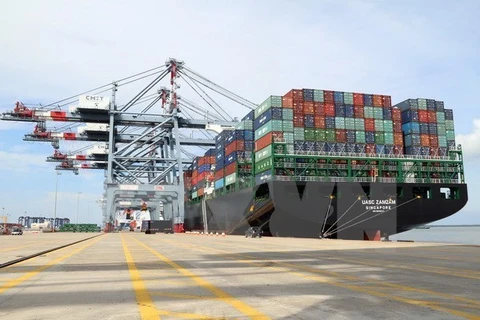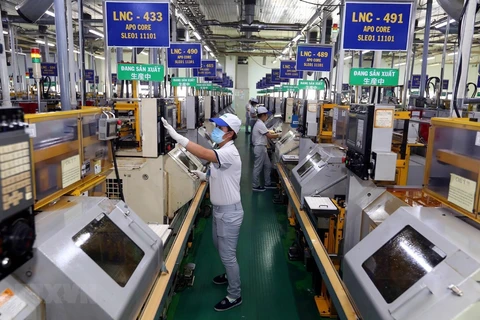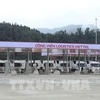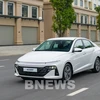HCM City (VNA) - Ho Chi Minh City will harmoniously develop modes of transport, multi-modal transport and logistics services with priority given to logistic corridors to seaports and other localities in the south of Vietnam.
Under Plan No.12714/VT on transport network development in HCM City until 2030, with a vision to 2045, issued recently by the Ministry of Transport (MoT), the city will priotise roads connecting to seaports in Cai Lai and Hiep Phuoc areas, corridors linking HCM City with South Central, Southwest and Central Highlands regions as well as border gates such as Moc Bai-Tay Ninh border gate and Ba Ria-Vung Tau international port.
The plan aims to further improve logistics infrastructure as well as cargo handling capacity and warehousing at seaports in service of supply chains, thus creating a regional logistics service centre in the southern metropolis.
Besides promoting the development of an inland container deport (ICD) system in line with the approved planning as a focal point for modes of transportation, HCM City strengthens the connection of transport services between businesses.
It creates favourable conditions for the formation of large-scale transport enterprises which are capable of implementing domestic-international transport chains with reasonable prices and high quality.
The city encourages transport businesses and goods owners to use transport exchanges to increase the transparency of the transport market. Businesses are urged to pour investment in container transport by inland waterway, and improve the capacity of container loading and unloading.
HCM City is implementing a green energy transition roadmap for urban transport in the 2022-2030 period, with public passenger transport services meeting 25% of market demand, and 100% of old buses will be replaced by electric ones or those using green energy by 2025.
Between 2031 and 2050, the city’s public passenger transport services must meet 40% of market demand, and by 2030, electric vehicles and vehicles using green energy must account for 50% of total passenger transport and all taxi services will use electric vehicles or using green energy. By 2050, electric buses or those using green energy will be put into service.
The MoT will coordinate with HCM City to apply science and technology in all fields of transport activities such as building a database system on transport activities, rest stops, vehicle load control, intelligent traffic system and driver training facilities.
It is necessary for the city to increase the number of businesses providing full-package logistics services, applying modern technology to achieve higher service quality, mulling support measures to improve the operational efficiency of transport exchanges, forming large logistics enterprises as well as creating motivation for market development.
With its strategic location, HCM City is an important trade gateway for the country’s southern region.
The city topped the first-ever Vietnam Provincial Logistics Competitiveness Index (LCI) 2022, followed by Hai Phong, Binh Duong, and Ba Ria – Vung Tau and Hanoi, according to a report recently announced by the Vietnam Logistics Association (VLA).
The report was made based on a survey on 26 cities and provinces nationwide with the most outstanding GRDP, volume of transported goods, and number of logistics businesses.
It highlighted that infrastructure, human resources, logistics service providers, logistics service users and regulatory frameworks are important to shape up a sound logistics system.
The LCI, an index that evaluates the development speed, quality, infrastructure, and policies of municipal and provincial authorities for logistics service businesses in Vietnam, will be conducted yearly, providing an insight into localities’ logistics industry based on five pillars namely economy, logistics services, regulatory frameworks – policies, logistics infrastructure, and workforce.
Vietnam is now home to 4,000 logistics firms, 70% of them are located in HCM City and neighbouring localities. Most of the businesses are operating at a small scale, with 90% of them having less than 10 billion VND (over 413,800 USD) in capital, and 1% more than 100 billion VND./.

























